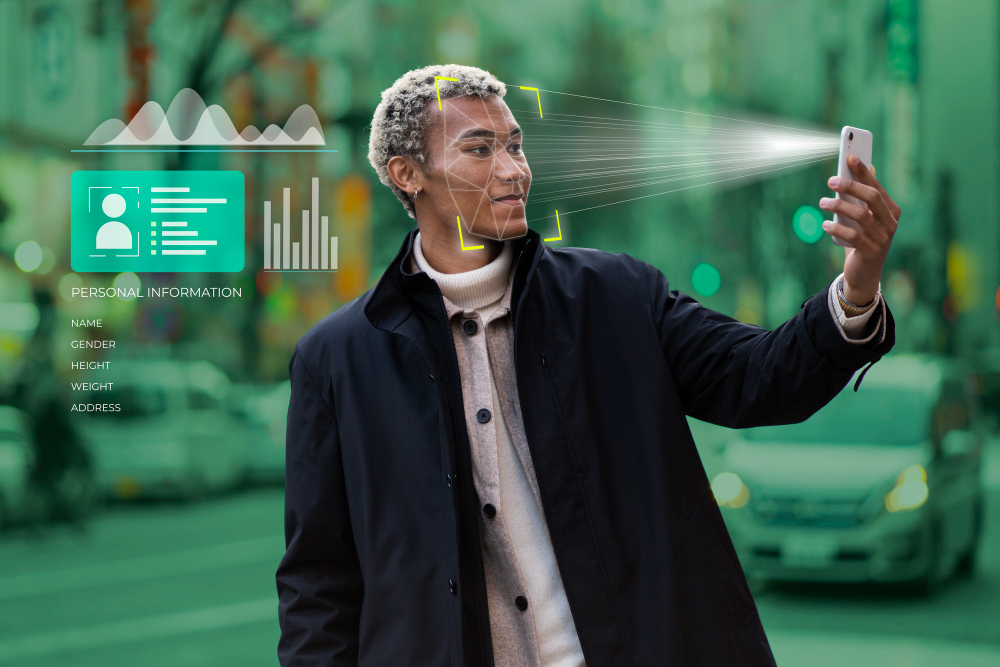In today’s digital world, people expect AI to respond like a person. Fast, natural, and without awkward pauses. As conversational AI becomes part of everyday tools like chatbots and virtual assistants, the speed of the response has become one of the most important parts of the user experience.
This guide looks at why latency matters, where delays come from, and how to reduce them across the entire system. Whether you’re building AI products or improving existing ones, you’ll find practical ways to make your conversations feel faster, smarter, and more human.
What Is Latency in Conversational AI?
Latency is the total time it takes for a conversational AI system to respond after a user finishes speaking. This delay is made up of several processes working in sequence, including converting voice into text, detecting when the user has stopped talking, generating a response with a language model, and then turning that response back into speech. Each of these steps adds milliseconds, and together they create the impression of speed or slowness.
While these individual delays may seem minor on their own, even a total response time above 800 milliseconds can noticeably break the conversational flow. In practice, users begin to feel that an AI is slow or unresponsive once latency crosses that threshold. Research from Stanford has shown that human conversations typically have only about 200 milliseconds between turns, making anything longer in AI systems feel unnatural or robotic. In healthcare settings, where trust and flow are especially critical, the Mayo Clinic has found that even small interaction delays can decrease user confidence and reduce adherence to digital health guidance.
Why Latency Matters
Low latency is about cognitive flow. Human conversation is based on fast back-and-forth exchange. When AI lags, the illusion of intelligence collapses.
Studies from WebMD show that sub-second responsiveness in digital assistants correlates with higher task completion rates and user satisfaction. On the flip side, latency above 1 second increases abandonment in virtual assistants by over 40%.
Anatomy of Latency in Conversational AI
Here’s how each part of the pipeline contributes to latency:
| Component | Typical Latency (ms) | Description |
| ASR (Speech-to-Text) | 100–300 | Converts audio to text in real time |
| Turn-Taking / VAD | 50–200 | Detects when the speaker is done talking |
| LLM Inference | 350–1000 | Generates an intelligent, context-aware reply |
| TTS | 75–300 | Converts reply into synthesized speech |
To improve overall performance, teams need to optimize each stage individually and then reduce system-wide overhead such as data transfer and API calls.

Optimizing ASR: Fast and Accurate Speech-to-Text
1. Choose Lightweight, Custom Models
Open-source models like Whisper are widely used, but latency can exceed 300ms. In contrast, Graphlogic Speech-to-Text API offers customized ASR pipelines with sub-100ms latencies, ideal for edge deployments and mobile assistants. Embedding models directly on-device eliminates round-trip cloud delays.
2. Stream Audio Processing
Incremental (streaming) ASR allows partial transcriptions to be returned as the user speaks. This speeds up interaction significantly and enables predictive prompting.
3. Use Early Endpointing
Endpointing identifies when the user has stopped speaking. Models must strike a balance: aggressive endpointing shortens wait time but risks cutting off speech. Adaptive thresholds based on signal energy and pause duration are ideal.
Reducing Delay in Turn-Taking
1. Minimize Silence Thresholds
Turn-taking is subtle and culturally dependent. Too much delay between turns feels robotic; too little interrupts the speaker. Adjusting VAD sensitivity based on context—such as user speaking rate or domain — yields better flow.
2. Use Real-World-Trained Voice Activity Detectors
Advanced VAD models trained on diverse conversation datasets outperform traditional silence detectors. Graphlogic’s Generative AI & Conversational Platform includes real-time VAD models that maintain fluidity across languages and speech styles.
Accelerating LLM Response Times
1. Select Speed-Optimized Models
Large models like GPT-4 offer powerful reasoning but slower inference (700–1000ms). By contrast, Gemini Flash 1.5 delivers sub-350ms replies for short, structured tasks. Choose based on domain complexity and performance requirements.
2. Prompt Optimization
Longer context windows and verbose prompts increase load. Reduce latency by:
- Using templated prompts
- Truncating irrelevant history
- Summarizing user input before passing it to the model
3. Caching and Parallel Inference
For repetitive queries, use caching to skip redundant inference. GPU-accelerated parallel pipelines can also handle high traffic without degradation.
Enhancing TTS Responsiveness
1. Use Streaming Synthesis Engines
Streaming TTS starts speaking as it generates phonemes, minimizing awkward pauses. For example, Flash TTS models deliver <75ms startup time, compared to 300ms+ in conventional engines.
2. Enable Multi-Threaded Rendering
Splitting synthesis across threads (text chunking) reduces latency without sacrificing speech quality. Multi-core rendering is especially useful in web-based or embedded voice assistants.
| TTS Engine | Model Time (ms) | Total Latency | Notes |
| Flash | 75 | ~135 | Fastest; ideal for real-time conversation |
| Turbo | 300 | ~300 | High-quality, low-latency default choice |
| Standard | 500+ | 700+ | Not suitable for responsive applications |
Tackling Latency in System Architecture
1. Co-Locate Components
Latency rises significantly when services call out to multiple external APIs. Hosting ASR, LLM, and TTS together (e.g., via a single platform like Graphlogic Generative AI) keeps traffic local and minimizes delay.
2. Avoid Synchronous Bottlenecks
Whenever possible, decouple processing stages. For example, send a partial response (“Let me check that…”) while the backend fetches data. This asynchronous design mimics human hesitation and maintains engagement.
3. Optimize Network Stack
- Use persistent connections (HTTP/2, gRPC)
- Reduce DNS lookups and TLS handshakes
- Place servers closer to users with CDNs or edge computing

Managing Telephony and API Delays
- Telephony latency adds ~200ms (regional) to 500ms (international). Consider prefetching likely user intents to offset delay.
- For third-party APIs (e.g., payments, calendar), batch or parallelize requests. Offload non-urgent data pulls to background tasks.
Best Practices for End-to-End Optimization
| Layer | Best Practice | Latency Improvement |
| Speech-to-Text | Use lightweight streaming ASR | Up to 300ms saved |
| Turn-Taking | Tune VADs, minimize silence thresholds | 50–150ms gain |
| LLM | Use fast models, cache frequent queries | 300–600ms reduction |
| TTS | Flash or Turbo engines + streaming output | 200ms+ faster than standard engines |
| System Architecture | Co-location, edge processing, persistent sessions | Up to 500ms saved |
Monitoring and Iteration
In conversational systems, even a slight delay can disrupt the user experience. Managing latency is not a one-time fix but a continuous process that adapts to changing scale, user behavior, and system demands.
Teams need to monitor performance closely, analyze real-time metrics, and make regular improvements. Bottlenecks can appear without warning, and what works under one load may fail under another.
For teams growing conversational AI, ongoing iteration is key to keeping interactions smooth and users engaged.
Latency management is never one-and-done. Keep improving by:
Looking Ahead: The Future of Low-Latency AI
Emerging technologies are poised to revolutionize real-time conversational systems:
- Edge AI. On-device ASR and TTS reduce reliance on cloud and boost privacy.
- Custom hardware. Neural accelerators and AI-specific chips cut inference time dramatically.
- Latency-aware models. New architectures factor delay into training objectives, making them naturally faster.
- User-adaptive timing. AI learns each user’s rhythm and tailors timing accordingly.
With these advances, future AI systems may respond faster than humans can speak — without sounding robotic.
Final Thoughts
Latency is not just a technical metric. It is what makes an AI system feel natural, responsive, and human. When every part of the pipeline works together smoothly and quickly, the conversation feels real and effortless.
The good news is that the technology is already available. Platforms like Graphlogic provide integrated tools for building low latency, high performance conversational AI that meets modern user expectations.
FAQ
Anything under one second is generally considered good. Staying below 800 milliseconds feels more natural and keeps users engaged.
Yes. Use efficient models, optimized prompts, and platforms like Graphlogic Generative AI that are designed for low-latency performance.
Test each part of your system separately. Speech-to-text, language models, and text-to-speech should all be profiled. Watch for delays in network calls or unoptimized code.
Absolutely. Running ASR and TTS directly on a device avoids cloud delays and improves speed, especially in mobile or offline environments.
It does. Faster responses are perceived as smarter, more responsive, and more human-like. Even small delays can make the system feel less capable.
Not completely, but it can be reduced to the point where users don’t notice it. With the right tools and architecture, the interaction feels instant.

